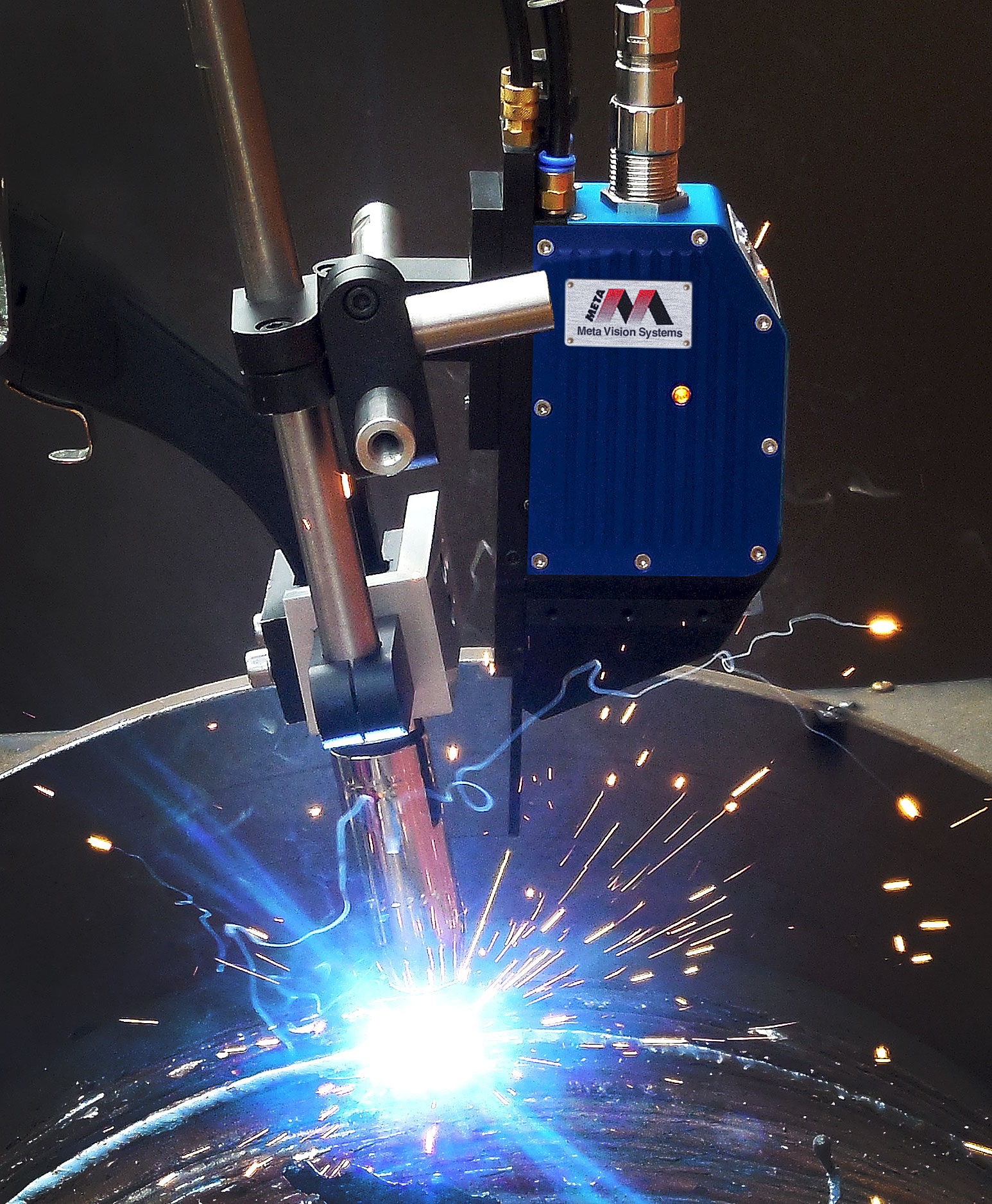META to launch new robot welding sensor at Fabtech
Meta Vision Systems (Oxford UK and Montreal Canada) announces the launch of a new laser sensor at the forthcoming Fabtech show in Atlanta, Georgia, to be held from 11th to 13th November 2014.

Known as SLS ARC, the new model is an extension of Meta’s successful range of Smart Laser Sensors, optimised for robotic arc welding applications. It is suitable for seam finding and real-time weld seam tracking in all of the usual welding processes, including high current GMAW and FCAW.
Steve Thacker, Meta’s General Manager, commented “Meta was spun out of Oxford University in 1984 to commercialise a research project that developed a laser vision sensor for use in robotic MIG welding in the automotive industry. The SLS ARC represents the latest development in a thirty-year sequence which started with that first Meta sensor.
“The automotive sector represents an important and still growing part of our business, and one where we have had very good recent success. We felt it was timely to build on that success with a new sensor fine-tuned for aggressive robot welding applications. The ARC is just one part of an overall product development plan aimed at extending the state of the art in robot welding.”
By using some of the inherent advantages of SLS technology, including fully automatic image quality optimisation, combined with new sensor optics and a mechanical design matched to the requirements of robot arc welding, the SLS ARC provides a high performance laser sensor in a rugged package as demanded by the automotive industry.
The SLS sensor series is the cornerstone of Meta’s Smart Laser Pilot (SLPi) system, which exploits direct Ethernet connection from the sensor head directly to the robot controller to give excellent seam finding and real-time tracking performance with a simple system hardware architecture.
Jonathan Moore, Meta’s Technical Director, explained “The SLS family has been successful, not only because it was the first welding sensor to include the image processing inside the sensor head, but also because it encompassed several new developments and ways of improving particular features, all of which resulted in better performance while achieving a very competitive price. The ARC takes that approach one step further by using the technology features in the best possible combination for robot arc welding.”
Release no: 1050(PR) (download PDF)

